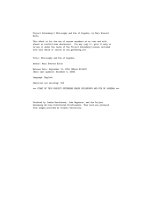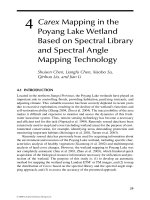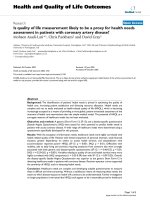copyedit and printing deactivated original document has 4 pagesfull library access is here httpwwwscientificnetsubscribe
Bạn đang xem bản rút gọn của tài liệu. Xem và tải ngay bản đầy đủ của tài liệu tại đây (113.89 KB, 1 trang )
<span class='text_page_counter'>(1)</span><div class='page_container' data-page=1>
THE THERMAL, MECHANICAL AND ELECTRONIC PROPERTIES OF
NANOSCALE MATERIALS: AB INITIO STUDY
K. Masuda-Jindo
1,a*, Vu Van Hung
2,band M. Menon
3,c1
Department of Materials Science and Engineering, Tokyo Institute of Technology,
Nagatsuta 4259, Midori-ku, Yokohama 226-8503, Japan
2
Department of Physics, Hanoi National Pedagogic University, km8 Hanoi-Sontay Highway, Hanoi,
Vietnam
3
Department of Physics and Astronomy, University of Kentucky, Lexington, Kentucky 40506,
U.S.A.
a
, b
Keywords: statistical moment method, carbon nanotube, graphene, thermodynamic properties,
quantum conductance, SW defects
Abstract. The mechanical, thermal and electronic properties of the nanoscale materials are studied
using an ab initio molecular dynamics (TBMD) method and statistical moment method (SMM). We
investigate the mechanical properties of nanoscale materials like carbon nanotubes (CNT), graphens
and nanowires in comparison with those of corresponding bulk materials. The electronic density of
states and electronic transports of the nanoscale materials, with and without the atomistic defects
are also discussed. We will show that the thermodynamic and strength properties of the nanoscale
materials are quite different from those of the corresponding bulk materials.
1. INTRODUCTION
Recently, there has been a great interest in the study of nanoscale materials since they provide
us a wide variety of academic problems as well as the technological applications [1-6]. In particular,
the discovery of carbon nanotubes (CNT) by Iijima [5] and subsequent observations of CNT's
unique electronic and mechanical properties have initiated intensive research on these
quasi-one-dimensional (1D) structures. Now, it has been observed that the introduction of lattice
defects and mechanical deformation influence quite significantly on the electronical properties of
nanoscale materials [7,8]. CNT's have been thus identified as one of the most promising building
blocks for future development of functional nanostructures.
The purpose of the present paper is to investigate the mechanical strength and fracture
behavior of nanoscale materials using the ab initio tight-binding molecular dynamics method [9,10]
combined with the temperature Lattice Green's function method [11-12]. We calculate the atomic
configurations and strength properties of nanoscale materials including extended defects using the
new version of the molecular dynamics method, constraint molecular dynamics (c-MD) method, on
the basis of the Lattice Green's function theory. The thermodynamic and electronic properties of
nanoscale materials are also studied including the temperature dependence of the atomistic spacing
and the resulting changes in the interatomic force constants.
2. PRINCIPLE OF CALCULATIONS
For treating mechanical properties of nanoscale materials we will use the ab initio
tight-binding molecular dynamics methods [7,8], which have been very successful in the
calculations of various chemical and physical properties of nanoscale materials. In the present
article, we also use the constraint MD method combined with the lattice Green’s function (LGF)
approach to study the initiation of microcracks in the nanoscale materials, like graphene sheets,
nanographites and nanotubes.
For the evaluation of the anharmonic contributions to the Free energy Ψ within the framework
of the statistical moment method (SMM), we consider a quantum system, which is influenced by
<i>Materials Science Forum Vols. 561-565 (2007) pp. 1931-1934</i>
<i>online at </i>
<i>© (2007) Trans Tech Publications, Switzerland</i>
<i>Online available since 2007/10/02</i>
All rights reserved. No part of contents of this paper may be reproduced or transmitted in any form or by any means without the
written permission of the publisher: Trans Tech Publications Ltd, Switzerland, www.ttp.net. (ID: 203.162.18.62-26/10/07,03:38:56)
Copy,Edit and Printing deactivated. Original document has 4 pages
</div>
<!--links-->
<a href=''>written permission of the publisher: Trans Tech Publications Ltd, Switzerland, www.ttp.net</a>









